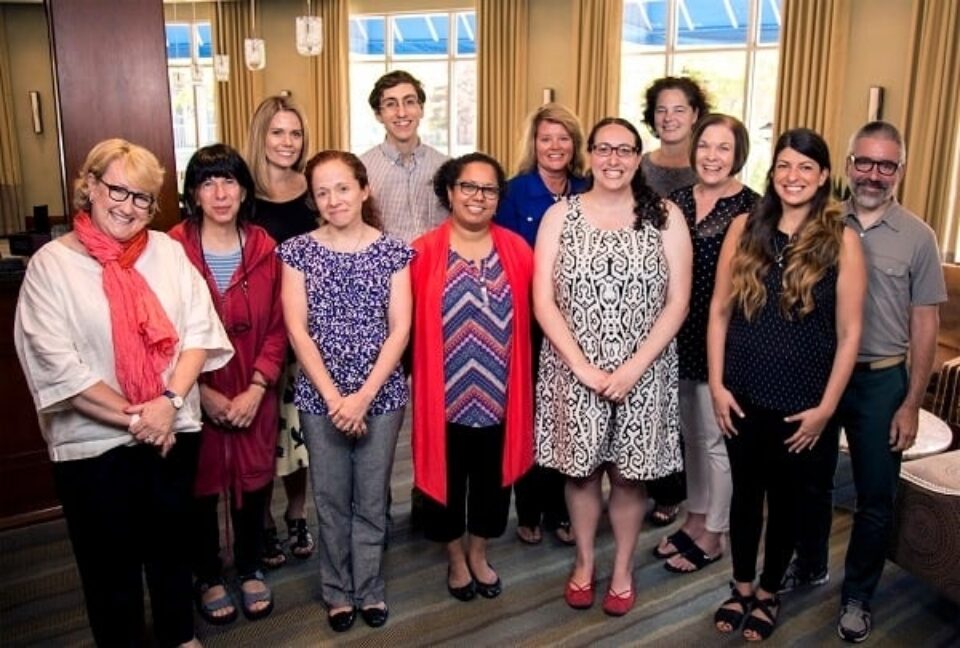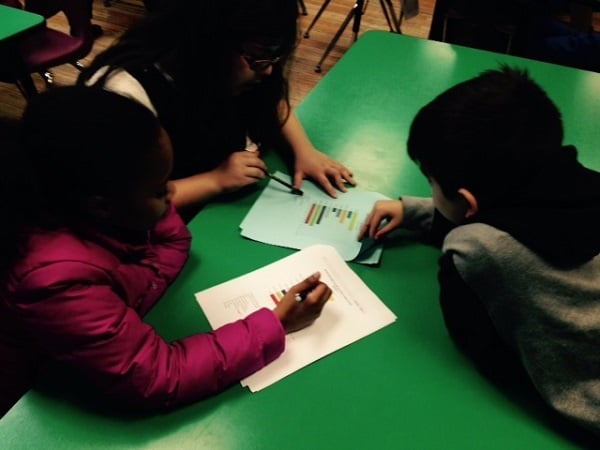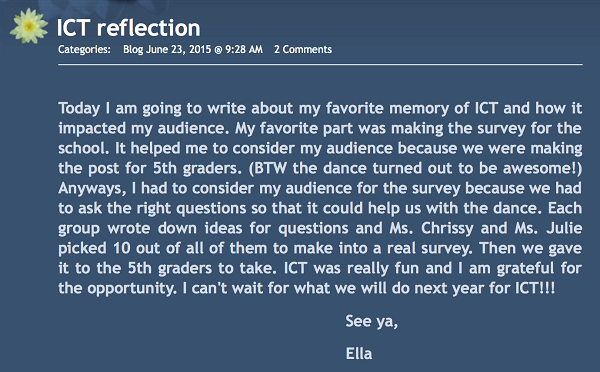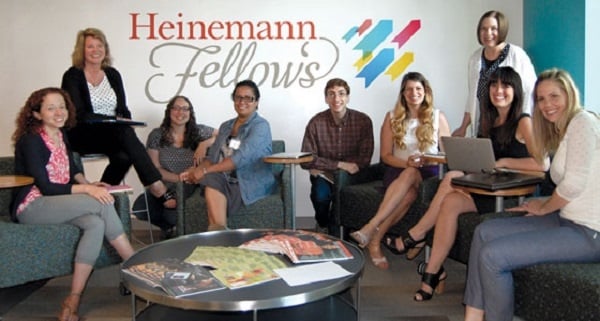
Julie Nora is a Heinemann Fellow with the 2014–2015 class, and has been an educator for 24 years. In today's post, Julie talks about having her students engage an authentic audience by creating a poll and effecting change for a school dance.
By Julie Nora
My co-teacher Chrissy and I distributed the results of the dance survey that our fourth grade students had created. Immediately, students moved to the data sets as if a magnet were pulling them. Their bodies were practically lying on the tables so they could see the results and there was a productive buzz in the room. Noting their engagement, I paused the class and asked what was so interesting to them. Hands shot up. Isaias volunteered, “We created the survey. We want to know what the fifth graders said.” Nicole said, “We took the survey, I want to compare how the fifth graders responded to how we responded.” And Sebastian added, “We asked the questions because we need to plan the dance.”

Throughout the 2014–15 school year, I conducted action research as a Heinemann Fellow. As the director of an elementary school, I was interested in leveraging Information and Communication Technology (ICT) to extend teaching and learning, providing opportunities for students to engage in authentic writing tasks, and finding opportunities for students to interact with authentic audiences. I partnered with our ICT teacher and the three fourth grade teachers.
Originally, I envisioned the authentic audience to be a global audience, and for the students to write blog posts. Students did write many blog posts, however the above example helped me to understand that having an authentic audience and purpose enhances engagement with writing. Creating the survey helped the students develop a nuanced understanding of audience, piqued their interest in analyzing its results, and improved their self image as writers.
The parent organization, which organizes enrichment activities for our students, approached me about the annual fourth and fifth grade dance. They were concerned that last year’s attendance was down. They thought that there was a group of students who did not feel comfortable going to a dance and wondered if we should change the event to a sports night. Committed to having a school dance, I asked if our fourth graders could create a survey to try to help plan a dance that would have more participation than last year. In our ICT class, the students brainstormed questions and created a survey using Survey Monkey that would be distributed to fourth and fifth graders.
As students brainstormed questions for the survey, they realized how much they needed to consider audience: survey questions for fourth graders, who had not attended last year’s dance, needed to be different than those for fifth graders. Other questions could be used for both fourth and fifth graders, such as “What type of music would you like?”
Here is what one student wrote about creating the survey.

After students reviewed the data, they shared it with the organization of parents, who made changes to the program based on this data. They changed the start and end time, and incorporated activities like a photo booth. The result was increased participation!
The students realized that by seeking input from all fourth and fifth graders, they generated interest in the dance. They altered the program to accommodate some of the requests. Creating and analyzing the survey made them realize the power of their writing. We had them reflect on this in a blog post.
In their posts, they commented on how they made a difference with their writing:

While I set out to give students access to the authentic audience of the world, I realized that by having a local authentic audience, they were able to realize how their writing could impact real people, namely, their schoolmates, engage them more in their writing, and, as a result, improve their writing.
♦ ♦ ♦ ♦

Julie Nora is the Director of the International Charter School in Pawtucket, Rhode Island. Her action research question asks, "How will having an authentic writing task for global audiences impact student engagement in a Two-Way Immersion setting?" Follow her progress on Twitter at @julienora


